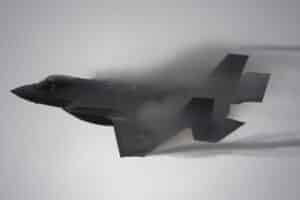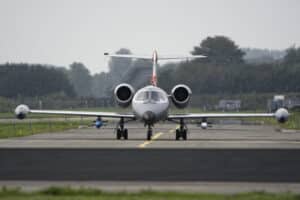The international air exercise Frisian Flag 2023 took place from Monday 2 to Friday 13 October 2023 at Leeuwarden Air Base, The Netherlands. Unrest around the world and the ongoing war on Europe’s eastern border show a once again clearly that peace and security cannot be taken for granted. Well-trained units are therefore of great importance to ensure the security of the Netherlands and NATO territory and to defend them if necessary, now and in the future.
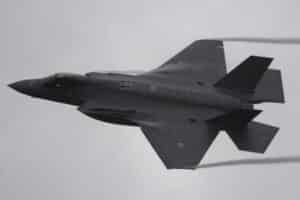
Recent air policing missions on the eastern flank of NATO territory, as well as past missions, notably over Kosovo, Afghanistan and Iraq, have proven that international cooperation is essential. All differed greatly in terms of threat level and pilot task. During Frisian Flag 2023, pilots are prepared for various situations involving operations in an international context. Complex scenarios allow training for defensive missions (such as monitoring the airspace or protecting support aircraft) and offensive missions (such as attacking the airspace to gain the upper hand, but also attacking ground targets). This makes the Frisian Flag a valuable exercise to participate in for both young pilots and experienced captains.
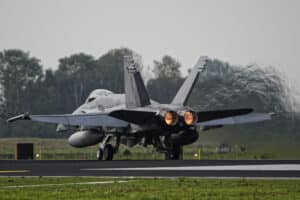
Twice a day, around 30 to 40 planes take off for a training mission. Flight movements take place from Monday to Friday between 08:00 and 17:00.
During the Frisian Flag event, the existing large military training area over the North Sea and the northern Netherlands will be used. Although most of the training takes place over the sea, the exercise is also clearly visible from land. This will mainly take place during the second week of the financial year. A larger area above the provinces of Friesland, Groningen, Drenthe, Overijssel and northern North Holland was then reserved.
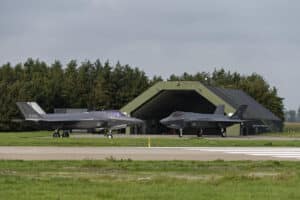
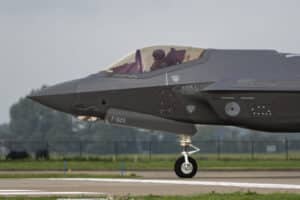
The name “Frisian Flag” was chosen by analogy with the various similar exercises that have the alien “Flag” in their name, such as “Red Flag” (USA) and “Blue Flag” (Israel). The name “Frisian Flag” refers to the province of Friesland as the home province of the air base. International exercises involving large numbers of combat aircraft have been taking place for decades from Leeuwarden Air Base. From all these exercises was born the current “Frisian Flag”, which has had this name since 1999 and is well known.
Exercises like Frisian Flag provide NATO with the necessary training. In addition to the necessary, attractive and challenging training and learning environment, Frisian Flag allows the Royal Dutch Air Force (RNLAF) and its partners to demonstrate what they are capable of.
The RNLAF has been deployed almost continuously over the past decades, not only for international peacekeeping and peace enforcement missions, but also to protect the territory of NATO, support allies and highlight the strength of the NATO alliance.
International deployments and missions almost always take place in cooperation with allies, coalition partners within NATO, the UN or the EU or a group of countries sharing the same goals and values. But always in an international context. International deployments or missions do not begin with an actual operational deployment, but with shared values, starting points, doctrine, training and exercises. Training in an international context is necessary to ensure that the RNLAF remains capable of fulfilling its air defence missions and participating in future international missions. This is evidenced by the home-based deployment over Poland in 2022, in response to the Russian invasion of Ukraine. Hours after the invasion, at the request of NATO, the RNLAF and its allies flew over Poland to protect the airspace of the eastern flank, while under NATO command. Following this mission, the RNLAF also executed enhanced air policing missions over Bulgaria in 2022 and Poland in 2023.
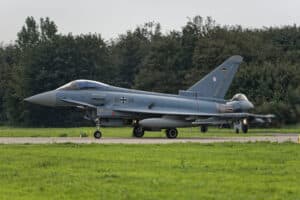
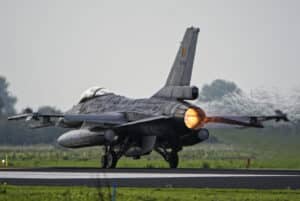
During this two-week live-flight exercise, the RNLAF works with other armed forces services and coalition partners to practice combined air operations against adversaries comparable in strength to the world’s largest military powers. Daily training missions are planned, led and evaluated each day by a different participant/NATO partner, meaning each participant is challenged and trained in all aspects of the mission.
Complex Scenarios Military aircraft may be tasked with providing air defence, gathering information, supporting ground units, or supporting special operations. All of these different types of missions are practised during Frisian Flag, and much more. One of the strengths of Frisian Flag is the steep learning curve during the exercise. Lessons identified on the first day are put into practice the next day. This is achieved through daily mass debriefings, in-depth analyses and mission (de)briefings. The experience gained during previous missions is analysed in depth and applied during subsequent missions. Larger and more complex scenarios are practised, in which combat aircraft are exposed to ever-increasing levels of air-to-air and ground-to-air threats. They include various scenarios such as air defence missions, offensive missions (strikes), protection of high-value airborne assets and air interdiction, close air support and suppression of enemy air defence/destruction. Safety is the number one priority and high-quality operations are the standard. This is an important objective of the Frisian Flag organisation, which is in the hands of the 323 Squadron at Leeuwarden Air Base.
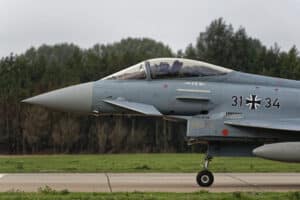
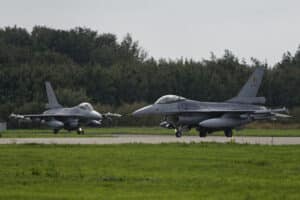
Major F. head of the Belgian detachment: “The goal is to have eight planes and 16 pilots for the exercise. We do 12 outings per day. In total, there are 100 people in the detachment. There are 30 Ops, ten supports and the rest are mechanics (between 60 and 70 mechanics).
There are several interests to come here in exercise. First of all, Leeuwarden AFB is not very far from our base and it is also relatively easy to deploy here. You can do a lot of things by road. Then there is the fact of being able to work with countries already operating the F-35 to prepare for the future.
The role of our pilots changes every day depending on the missions defined by the FF Staff.
The scenarios obviously take into account the specificities of each participating country and the aircraft used. In other words, they pose a scenario and see how the “Mission Commanders” will resolve it based on the capabilities available to them.”
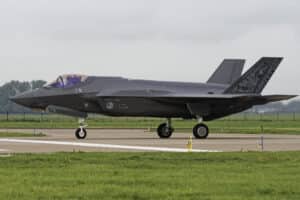
Participating nations from Leeuwarden AFB:
– Belgium: F-16AM
– Finland: F/A-18C
– Germany: E-2000 Eurofighter
– Netherlands: F-35A, AH-64, NH-90
– USAFE: F-35A
– Skyline Lear-35
From other Royal Navy aircraft carrier bases:
– F-16AM
– F-35B
– A330 MRTT for refuelling
– C-130

